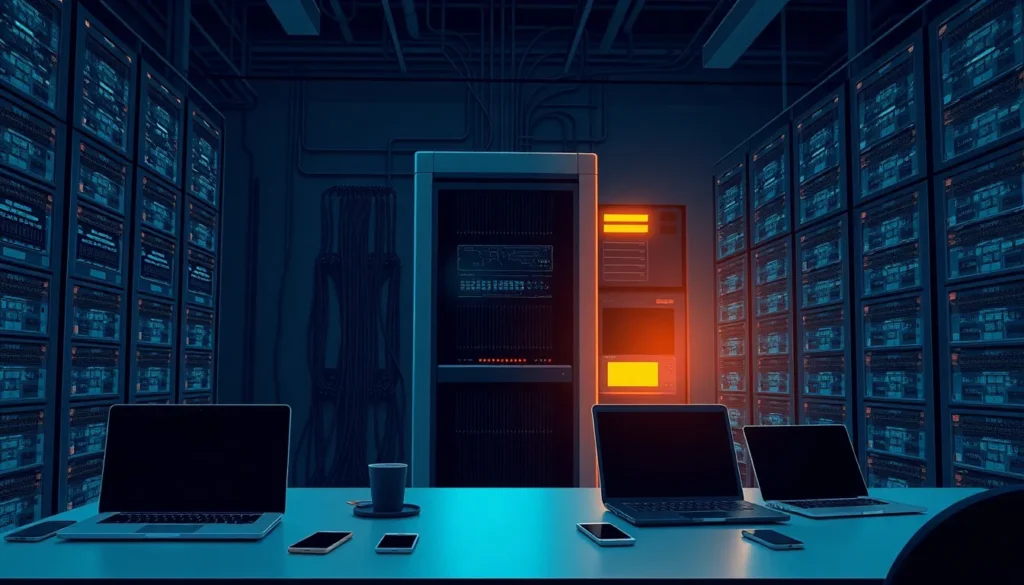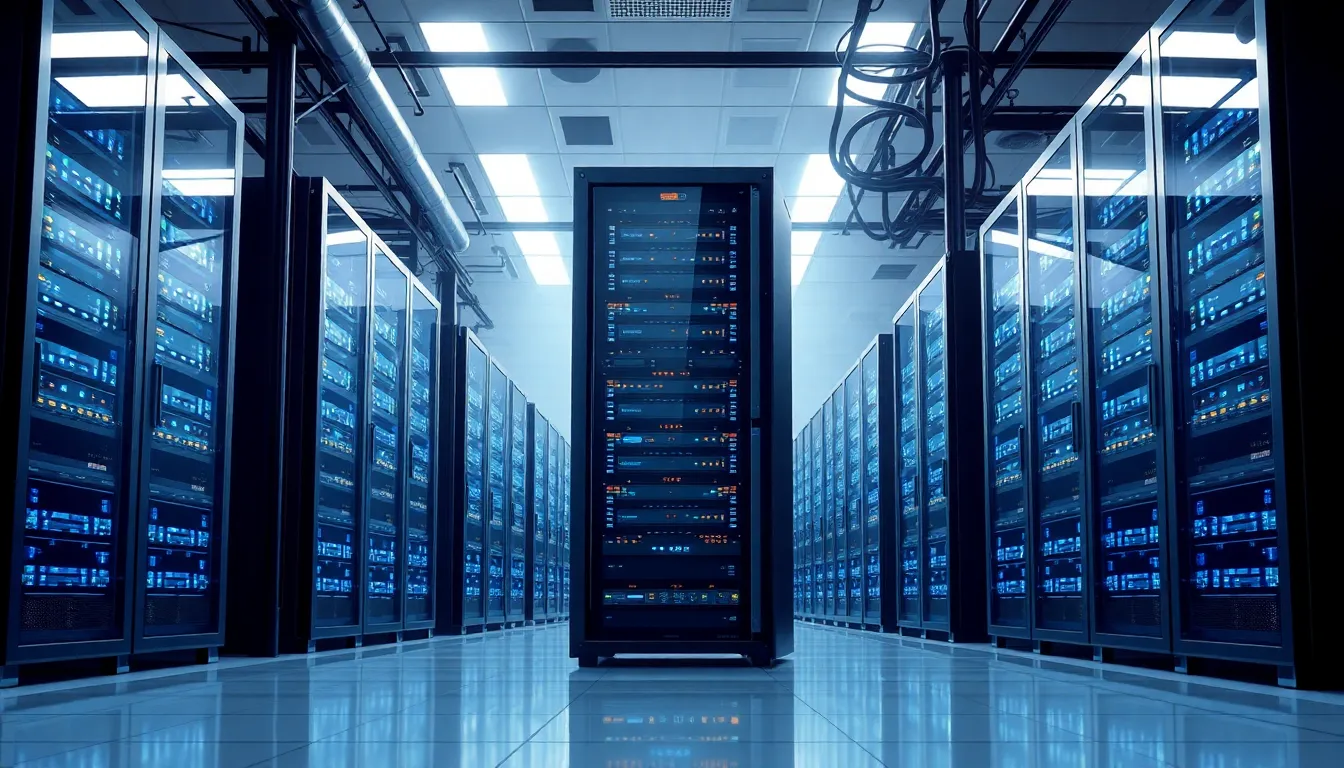
In a world dominated by sleek laptops and smartphones, the mainframe computer might seem like a relic from the past. But don’t let its vintage vibe fool you; this powerhouse is still the unsung hero of the tech universe. Think of it as the wise old wizard of computing, quietly managing vast amounts of data while everyone else is busy chasing after the latest gadget.
Main Frame Computer
Mainframe computers serve as powerful systems for processing vast amounts of data rapidly. These machines excel in transaction processing, capable of handling over a million transactions per minute, which makes them invaluable in sectors like finance and insurance. Characteristics include high reliability, security, and processing power, which allow for uninterrupted operations.
Organizations prefer mainframes for their ability to support thousands of users simultaneously. They are equipped with virtualization capabilities that facilitate multiple operating environments, enhancing resource utilization. Data storage on mainframes remains extensive, often reaching terabytes or even petabytes.
Notable manufacturers like IBM produce mainframes optimized for modern workloads. Models such as the IBM Z series integrate advanced features, ensuring adaptability to current cloud technologies. These systems not only support legacy applications but also modern programming languages, bridging the gap between old and new technology.
Mainframes contribute to enterprise-level computing by efficiently consolidating data centers, improving cost-effectiveness. They streamline operations, reducing hardware footprints while maintaining high performance. Innovation continues within this space, with ongoing developments focused on cloud integration, artificial intelligence, and machine learning.
Mainframe computers maintain a critical role in today’s technology landscape, organizing and processing massive data volumes while offering unparalleled reliability and security. Their persistence in the ever-evolving tech world underscores their importance, demonstrating that they remain indispensable tools for businesses managing complex data requirements.
Key Features of Main Frame Computers

Mainframe computers possess several key features that reaffirm their significance in data processing.
Processing Power
Processing power stands as a primary feature of mainframes. Capable of handling over a million transactions per minute, these systems excel in environments that demand high transaction volume. Users experience minimal latency in response times, allowing for real-time processing. Reliability remains paramount, as mainframes operate 24/7 without interruption, ensuring that businesses can depend on them for critical operations. Advanced architectures enable efficient management of various workloads, supporting thousands of simultaneous users without compromising performance. Notably, the integration of advanced processors drives their ability to adapt to modern technological requirements.
Storage Capacity
Storage capacity marks another critical feature for mainframe computers. These systems often achieve storage capabilities ranging from terabytes to petabytes, accommodating vast amounts of data. Organizations benefit from this extensive capacity, as it facilitates the management of large databases and archives efficiently. Virtualization technologies enhance storage management, allowing for optimized resource allocation. Data integrity and security come standard, ensuring sensitive information remains protected. Mainframes also support automated backups and recovery solutions, thus minimizing the risk of data loss. This robust storage capability contributes significantly to enterprise-level data handling and decision-making processes.
Applications of Main Frame Computers
Mainframe computers play a vital role across various industries due to their unmatched processing capabilities and reliability.
Industries Utilizing Main Frames
Finance remains one of the primary sectors leveraging mainframe technology. Banks depend on these systems for transaction processing and real-time data management. Insurance companies also rely on mainframes to handle large claim processes efficiently. Retail businesses utilize mainframes for inventory management and sales tracking, supporting high transaction volumes daily. Government agencies use mainframes to manage vast databases, ensuring secure and efficient data handling. Healthcare organizations benefit from the secure storage of patient records, allowing for quick access to critical information.
Specific Use Cases
Mainframes excel in several specific applications. Real-time transaction processing is essential for credit card transactions, handling thousands simultaneously without delays. Airlines utilize mainframes for reservation systems, ensuring accurate flight and passenger data management. E-commerce platforms count on mainframes for online transaction security, protecting customer information during purchases. Additionally, big data analytics employs mainframes to process and analyze extensive datasets, providing insights for business decision-making. Automated backups and disaster recovery operations play a crucial role in ensuring continuous service and data safety.
Advantages of Main Frame Computers
Mainframe computers offer numerous benefits, particularly in enterprise settings. Their design ensures they meet demanding data processing requirements.
Reliability and Stability
Mainframe computers demonstrate exceptional reliability and stability. They operate continuously without downtime, ensuring critical tasks are completed without interruption. System redundancies and error-checking mechanisms minimize failure risks. Such dependability makes them suitable for industries that depend on real-time data processing. Users can confidently process millions of transactions simultaneously without performance degradation. The architecture supports extensive error recovery procedures, contributing to overall operational stability. Organizations leverage this reliability to maintain business continuity, even during peak loads.
Security Features
Mainframe computers come equipped with advanced security features. They safeguard sensitive data through robust encryption and access controls. Multi-layered security measures protect against unauthorized access, ensuring that information remains confidential. Many mainframes include automated monitoring systems that detect and respond to potential threats swiftly. Additionally, their centralized architecture simplifies security management, allowing organizations to implement uniform policies. Frequent updates and patches support compliance with evolving security standards. These features position mainframes as a trusted choice for sectors that handle sensitive information, such as finance and healthcare.
Future of Main Frame Computers
Mainframe computers continue to evolve, adapting to modern technological demands. With the rise of cloud computing, these systems integrate seamlessly into hybrid environments, providing scalability and flexibility. Businesses increasingly leverage mainframe capabilities to manage vast datasets while utilizing cloud resources for additional processing power.
Innovations in artificial intelligence and machine learning are shaping the future of mainframe technology. Advanced algorithms enhance data processing efficiency, enabling real-time analytics and insights. Companies can improve decision-making processes through the analytical capabilities afforded by these advancements.
Increasing security demands significantly influence mainframe development. Organizations prioritize robust security measures, leading to the enhancement of encryption protocols and access controls. Such features protect sensitive data while complying with stringent regulatory requirements in sectors like finance and healthcare.
Collaboration between traditional IT infrastructures and modern technologies strengthens mainframes’ relevance. Developers create tools that support both legacy systems and modern applications, ensuring organizations can transition smoothly into future landscapes without losing critical functionality. This synergy allows for operational efficiency, bridging the gap between old and new paradigms.
The financial sector remains a primary adopter of new mainframe technologies. For instance, banks utilize enhanced transaction processing capabilities for high-frequency trading and fraud detection, relying on real-time data management. Insurance firms benefit from improved claims processing through automated workflows powered by mainframes.
Mainframes also support big data initiatives by providing powerful processing capabilities. Usage of mainframes for data-driven strategies allows organizations to harness valuable insights and drive business growth effectively. As industries become increasingly reliant on data, mainframes will adapt to meet expanding requirements and continue playing an integral role in enterprise computing.
Conclusion
Mainframe computers remain a cornerstone of enterprise computing in a rapidly changing technological landscape. Their unmatched processing power and reliability make them indispensable for industries that require real-time data management and secure transaction processing. As businesses increasingly rely on data-driven decisions, mainframes continue to evolve, integrating with modern technologies like cloud computing and artificial intelligence.
The ongoing innovation within mainframe technology ensures that these systems adapt to current demands while maintaining their core strengths. With their ability to support thousands of users and handle vast amounts of data, mainframes are not just relics of the past but vital components of future-ready IT infrastructures. Their enduring presence underscores their significance in managing complex data requirements across various sectors.


